Step Ladders: Versatile Tools for Safe and Efficient Vertical Access
Date Posted:9 August 2024
Step ladders are essential tools used in various industries, workplaces, and homes to provide safe and stable access to elevated areas.
Step ladders are essential tools used in various industries, workplaces, and homes to provide safe and stable access to elevated areas. They are characterised by their portable design, foldable structure, and multiple steps or rungs that facilitate climbing. This article explores the functionality, types, benefits, applications, and considerations for choosing step ladders suitable for different environments.
Functionality and Design of Step Ladders
1. Portable and Foldable Design
Step ladders are designed with a lightweight and foldable frame, allowing for easy transport and storage. They typically feature hinged joints or locking mechanisms that secure the ladder in an open position for stability during use and collapse for compact storage.
2. Multiple Steps or Rungs
Step ladders are equipped with multiple steps or rungs positioned at regular intervals, providing stable platforms for climbing and working at varying heights. They may include safety rails, platforms, or tool trays for added convenience and safety.
3. Non-Slip Treads
Each step or rung of a step ladder is fitted with non-slip treads or grips to prevent slips and enhance user safety. These tread surfaces provide traction and stability, even when users are wearing work boots or handling tools on elevated platforms.
4. Load Capacity
Step ladders are designed to support specific weight capacities, ranging from light-duty models for household use to heavy-duty models for industrial and commercial applications. Load capacity ratings ensure safe operation and prevent structural failures.
5. Versatility in Height
Step ladders are available in various heights, typically ranging from a few feet to over ten feet tall. They accommodate different vertical access needs, from changing light bulbs and painting walls to accessing shelves or equipment in warehouses.
Types of Step Ladders
1. Single-Sided Step Ladders
Single-sided step ladders feature steps and a platform on one side, allowing users to climb and work facing the ladder. They are compact and suitable for tasks requiring vertical access against walls or in confined spaces.
2. Double-Sided Step Ladders
Double-sided step ladders have steps and platforms on both sides, providing access from either direction. They are ideal for use in open spaces or environments where access is needed from multiple directions simultaneously.
3. Platform Step Ladders
Platform step ladders feature a large, stable platform at the top, providing a secure standing area for users to work comfortably and safely at elevated heights. They are preferred for prolonged tasks requiring stability and balance.
4. Folding Step Ladders
Folding step ladders are designed with collapsible frames that fold flat for easy storage and transport. They are versatile and suitable for household chores, DIY projects, and occasional use in residential settings.
5. Telescoping Step Ladders
Telescoping step ladders extend and retract to adjust their height, offering flexibility for reaching varying heights without the need for multiple ladder sizes. They are compact when collapsed and expandable for extended reach.
Benefits of Step Ladders
1. Accessibility and Mobility
Step ladders provide convenient access to elevated areas without the bulkiness or setup time required for extension ladders or scaffolding. Their portable design and lightweight construction enable easy mobility between work locations.
2. Safety and Stability
Designed with safety features such as non-slip treads, locking mechanisms, and stable platforms, step ladders prioritise user safety during climbing and working at heights. They minimise risks of falls, slips, and injuries in various work environments.
3. Space Efficiency
Step ladders occupy minimal floor space and can be stored vertically or horizontally in closets, utility rooms, or vehicles. Their compact size and foldable design optimise storage efficiency without compromising accessibility.
4. Versatile Applications
Step ladders are utilised across diverse industries, including construction, maintenance, retail, hospitality, and residential sectors. They facilitate tasks such as painting, cleaning, shelving, inventory management, and routine maintenance.
5. Cost-Effective Solution
Compared to larger access equipment or scaffolding systems, step ladders offer a cost-effective solution for short-term tasks or occasional use. They require minimal maintenance and provide long-lasting durability for ongoing utility.
Considerations for Choosing Step Ladders
When selecting step ladders for specific applications, consider the following factors:
1. Height Requirements
Evaluate the maximum height needed to reach work areas comfortably and safely. Choose a step ladder with sufficient reach to accommodate tasks without overreaching or compromising stability.
2. Load Capacity
Match the ladder's load capacity to the combined weight of users and equipment or materials being carried. Select a ladder with a rated capacity that exceeds anticipated loads to ensure safe operation and prevent structural damage.
3. Material and Construction
Opt for step ladders constructed from durable materials such as aluminum or fiberglass for lightweight mobility or steel for heavy-duty applications. Consider weather-resistant coatings or finishes for outdoor use and exposure to elements.
4. Safety Features
Prioritise safety features such as non-slip treads, safety rails, platform locks, and ANSI/OSHA compliance certifications. Ensure the ladder meets industry standards for stability, weight capacity, and ergonomic design.
5. Storage and Transport
Choose a step ladder that folds compactly for convenient storage and transportability. Consider additional features such as built-in tool trays, carrying handles, or wheels for ease of movement between work sites.
Step ladders are an indispensable type of access equipment designed for enhancing accessibility, efficiency, and safety in various work environments and residential settings. With their portable design, stable construction, and ergonomic features, step ladders support a wide range of tasks requiring vertical access and elevated work platforms. Investing in quality step ladders with Verdex, tailored to specific height requirements, load capacities, and safety considerations ensures reliable performance, user comfort, and compliance with workplace safety standards.


























































































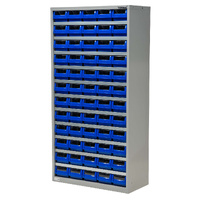

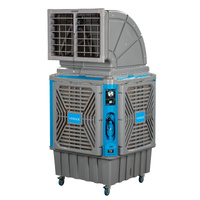



































 Trolleys & Hand Trucks
Trolleys & Hand Trucks Cage Trolleys
Cage Trolleys Cleaning Carts & Trolleys
Cleaning Carts & Trolleys Construction Trolleys
Construction Trolleys Custom Trolleys
Custom Trolleys Hand Trucks & Dollies
Hand Trucks & Dollies Laundry/Linen Trolleys
Laundry/Linen Trolleys Lifting Trolleys
Lifting Trolleys Order Picking Trolleys
Order Picking Trolleys Panel Cart Trolleys
Panel Cart Trolleys Platform Trolleys
Platform Trolleys Powered Trolleys
Powered Trolleys Shelf & Tiered Trolleys
Shelf & Tiered Trolleys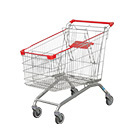 Shopping Trolleys
Shopping Trolleys Stainless Steel Trolleys
Stainless Steel Trolleys Tool Trolleys
Tool Trolleys Utility & Service Carts
Utility & Service Carts Lifting & Handling Equipment
Lifting & Handling Equipment Forklift Attachments
Forklift Attachments Jib Attachments
Jib Attachments Lifting Hoists & Pallet Hooks
Lifting Hoists & Pallet Hooks Load Skates & Tow Tugs
Load Skates & Tow Tugs Manual Stackers & Lifters
Manual Stackers & Lifters Pallet Jacks
Pallet Jacks Pallet Lifters
Pallet Lifters Pallet Rotators & Dispenser
Pallet Rotators & Dispenser Powered Pallet Trucks & Electric Lifters
Powered Pallet Trucks & Electric Lifters Scissor Lift Trolleys and Tables
Scissor Lift Trolleys and Tables Conveyor Equipment
Conveyor Equipment Conveyor Frames & Stands
Conveyor Frames & Stands Roller & Skate Conveyors
Roller & Skate Conveyors Ladders & Access Equipment
Ladders & Access Equipment Container & Yard Ramps
Container & Yard Ramps Ladders & Step Stools
Ladders & Step Stools Work Platforms & Crane Cages
Work Platforms & Crane Cages Drum Handling Equipment
Drum Handling Equipment Drum Storage & Bunding
Drum Storage & Bunding Drum Trolleys & Lifters
Drum Trolleys & Lifters Forklift Drum Handling
Forklift Drum Handling Waste Handling & Bins
Waste Handling & Bins Bin Lifters & Tippers
Bin Lifters & Tippers Plastic Waste & Wheelie Bins
Plastic Waste & Wheelie Bins Steel Waste & Tipping Bins
Steel Waste & Tipping Bins Waste Carts
Waste Carts Dangerous Goods Storage & Spillage
Dangerous Goods Storage & Spillage Aerosol Cans Storage Cages
Aerosol Cans Storage Cages Bunded Pallets & Storage
Bunded Pallets & Storage Corrosive Goods Storage Cabinets
Corrosive Goods Storage Cabinets DG Storage & Trolleys
DG Storage & Trolleys Flammable Liquid Cabinets
Flammable Liquid Cabinets Forklift Gas Storage Cages
Forklift Gas Storage Cages Site Storage
Site Storage Spill Kits
Spill Kits Shelving & Storage Equipment
Shelving & Storage Equipment Stillage & Transport Cages
Stillage & Transport Cages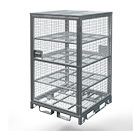 750 Series Cage Configurations
750 Series Cage Configurations Heavy Duty Cabinets
Heavy Duty Cabinets Heavy Duty Shelving
Heavy Duty Shelving Mega Bins & Pallets
Mega Bins & Pallets Packing & Workbenches
Packing & Workbenches Parts Trays & Stor-Pak Bins
Parts Trays & Stor-Pak Bins Pegboard & Louvre Panels
Pegboard & Louvre Panels Plastic Bins & Crates
Plastic Bins & Crates Plastic Handling Solutions Bins
Plastic Handling Solutions Bins Plastic Pallets
Plastic Pallets Stack & Nest Bins
Stack & Nest Bins Pallet Racking Accessories
Pallet Racking Accessories Workplace Equipment
Workplace Equipment Modular Workbenches
Modular Workbenches Electric Height-Adjustable Workbenches
Electric Height-Adjustable Workbenches Floor Matting
Floor Matting General Workplace Equipment
General Workplace Equipment Industrial Weighing Scales
Industrial Weighing Scales Packaging Machinery
Packaging Machinery Stationery Cupboards
Stationery Cupboards Storage and Stillage Cages
Storage and Stillage Cages Tool Trolleys
Tool Trolleys Tooling Cabinets
Tooling Cabinets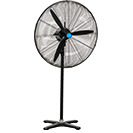 Workshop Fans and Coolers
Workshop Fans and Coolers Safety Barriers, PPE & Signage
Safety Barriers, PPE & Signage Barriers & Bollards
Barriers & Bollards First Aid Equipment
First Aid Equipment Gloves, Knives and PPE
Gloves, Knives and PPE Signage
Signage Cleaning & Site Supplies
Cleaning & Site Supplies Cleaning Equipment
Cleaning Equipment Cleaning Trolleys
Cleaning Trolleys Rubbish Bins
Rubbish Bins Signs & Traffic Supplies
Signs & Traffic Supplies Construction Equipment
Construction Equipment Construction Trolleys
Construction Trolleys Waste Handling
Waste Handling General Site Equipment
General Site Equipment Concrete Equipment
Concrete Equipment Site Storage
Site Storage Lifting Equipment
Lifting Equipment Verdex Specials
Verdex Specials










